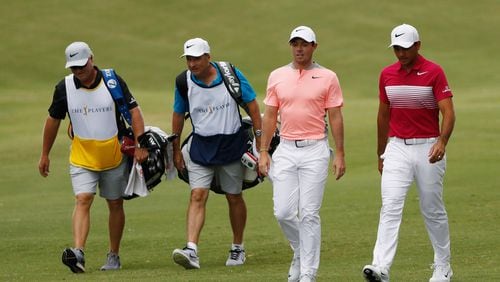There is a list of sports injuries to which we, the ungifted, can scarcely relate. We read about them every day and weigh their effects upon our favorite teams and players. But we don't really feel them.
Odds are most of us never will require Tommy John surgery in order to continue our pedestrian careers. If needed, I’m pretty sure I can type with a sore elbow.
A sports hernia? Who gets a sports hernia? I intend to suffer a regular hernia, like normal people.
With a few wise words, a friend of mind constantly assures me that we never will suffer the kind of painful tears and strains common to the athletic class. “Hey, you can’t pull fat,” he’ll say.
But a bad back – now there’s one just about all of us can understand. If you’ve never had back pain, just wait. You will.
This comes to mind this week at the Players Championship, where like many tournaments, the subject of back troubles has been prominent. Players old – David Toms – and fairly new – 2016 Masters champ Danny Willett – both have withdrawn from the Players citing back troubles.
The world’s No. 2-ranked player, Rory McIlroy, who already has missed play earlier this year because of a balky back, said he is once again experiencing discomfort. McIlroy is just a couple of weeks off a Caribbean honeymoon, but we will continue to assume the problems are totally golf related. He has an MRI scheduled for Monday back in Northern Ireland.
The tournament winner, Si Woo Kim, was only 21, and he already wakes up in the morning with the backaches of a retired stevedore (as he did even Sunday). And he has a history of withdrawing from events when his back flares up, on multiple occasions just this year. It is the ailment that is eating golf alive.
Of course, at every tournament of this size between now and whenever, there is the conspicuous back-related absence of Eldrick Woods. His spine may never be fine, and an entire sport is still trying to adjust to that reality.
Back injuries are as common to golf as fleas are to a pound. Louis Oosthuizen, who began Sunday’s round one stroke off the Players lead, was sidetracked by his back just a few years ago and travels with his own mattress to combat the aches. You can readily wince at each case, because practically everyone knows how difficult it is to perform mere everyday tasks with a bad back, let alone try to gouge out a long bunker shot.
It was Phil Mickelson, whose various maladies have not included back problems, who suggested this epidemic will continue as young players come up swinging out of their shoes in search of more length. As he told the New York Times last year, “You can play golf for a lifetime and injury-free if you swing the club like Bobby Jones did, and like (late golf pro and instructor) Ernest Jones used to teach, where it’s a swinging motion rather than a violent movement. A lot of the young guys continue to get hurt as they create this violent connected movement, and I don’t believe that’s the proper way to swing the golf club. I think you want to use leverage and kind of quiet your body down so the arc and club head can swing and accelerate.”
I don’t know about all that Mickelsonian techno-speak. I just look at how these players attack a golf ball and wonder why they all don’t leave vertebrae scattered about the course.
Alas, the bad back is something that never really seems to completely go away once it comes to visit. It is a scourge, and, as we all know, a persistent pain in that area located just south of the back.
About the Author







